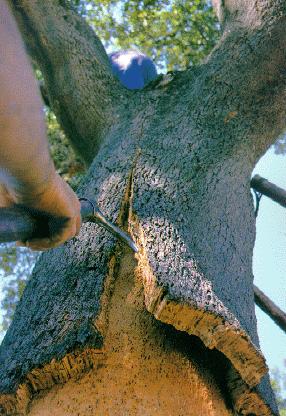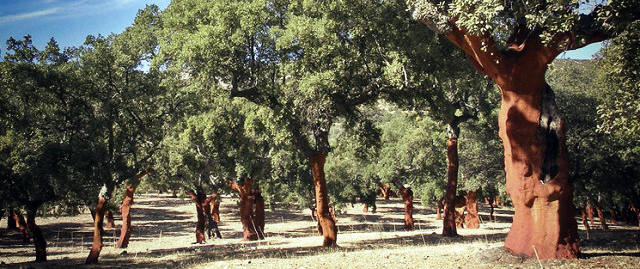

Cork is the bark that covers the wood of the cork oak that protects them against the extreme conditions of the Mediterranean climate, such as drought, high summer temperatures and fires.
As the tree develops, the bark, formed from annual layers, increases its thickness in proportion to the growth of the trunk or branch from which it originates.
Cork comes from the bark of the cork oak. It is a renewable and constant resource, making it ideal in terms of the ever-growing demand for the conservation of natural resources since it is obtained by debarking the cork oak, without cutting down any tree and this “harvest” is carried out every 9 to 12 years.
Cork is made up of polyhedral gaps similar to the cells of a honeycomb. The cells of the suberous tissue (cork) are dead, air-filled units.
The walls of these cells, which are like tiny watertight compartments, are mainly made up of suberin and cerine, substances that make them quite fireproof, very flexible and practically rot-proof.
Lenticels are called the existing pores in the suberous cortex, necessary for its respiration, since it is through these that the cork receives oxygen.
Regarding the chemical composition, it must be said that the first notable discovery in research on the nature or chemical composition of cork, identified «suberin», a fundamental substance, undoubtedly the most important of those that make up the suberous tissue. Suberin is currently known to be a mixture of fatty acids.

















